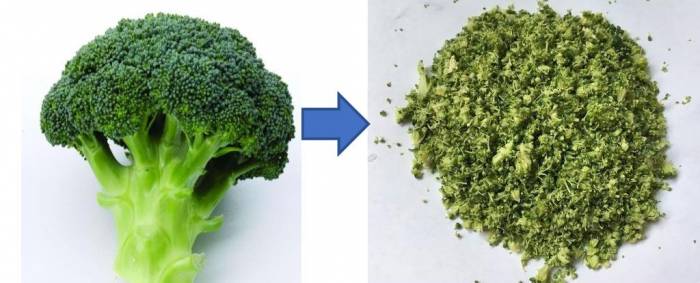With some early-stage studies showing how this compound plays a role in blood sugar control and potentially even has anti-cancer benefits, it's no wonder that broccoli pills are on the rise.
But a 2011 study has shown that eating the whole vegetable gets you more sulforaphane than taking a supplement - so a team of Chinese researchers has been on the case of finding the best way to cook broccoli.
They have a clear winner - but it's a hard sell if you have better things to do.
The interesting part is that sulforaphane doesn't just sit there in the broccoli florets, ready to be consumed. Instead, the vegetable contains several compounds called glucosinolates.
It also contains the enzyme myrosinase, which plants have evolved for defending themselves against herbivores. Through what's known as 'myrosinase activity', the glucosinolates get transformed into sulforaphane, which is what we want.
To kick myrosinase activity into gear, you need to do damage to the broccoli, so you'd think cooking would do the trick.
Unfortunately, studies have shown that common broccoli cooking methods, like boiling and microwaving, seriously reduce the amount of glucosinolates in the vegetable - even if you just zap it for a couple minutes. And myrosinase is super-sensitive to heat, too.
Hence, by far the largest amount of sulforaphane you can get from broccoli is by munching on raw florets. Ugh.
This got the team of researchers thinking about the results of stir-frying - the most popular method for preparing vegetables in China.
"Surprisingly, few methods have reported the sulforaphane concentrations in stir-fried broccoli, and to the best of our knowledge, no report has focused on sulforaphane stability in the stir-frying process," the researchers noted in their study.
The team bought a bunch of broccoli from the local market and set to work, measuring the levels of compounds in the vegetables as they went.
First, they basically pulverised the broccoli, chopping it into 2 millimetre pieces to get as much myrosinase activity going as possible (remember, it happens when broccoli is damaged).
Then they divided their samples into three groups - one was left raw, one was stir-fried for four minutes straight after chopping, and the third was chopped and then left alone for 90 minutes before being stir-fried for four minutes as well.
The 90 minute waiting period was to see whether the broccoli would have more time to develop the beneficial compounds before being lightly cooked.
And that's exactly what the team found - the broccoli that was stir-fried right away had 2.8 times less sulforaphane than the one left to 'develop' for longer.
"Our results suggest that after cutting broccoli florets into small pieces, they should be left for about 90 minutes before cooking," the team concluded, adding that they didn't test it but thought "30 minutes would also be helpful."
We're not sure we're willing to commit to all that effort, though. The team does say they're looking into ways to reduce the chopping needed, so watch this space - or just eat some raw broccoli.
The study was published in the Journal of Agricultural and Food Chemistry.
More about: #Broccoli
















































